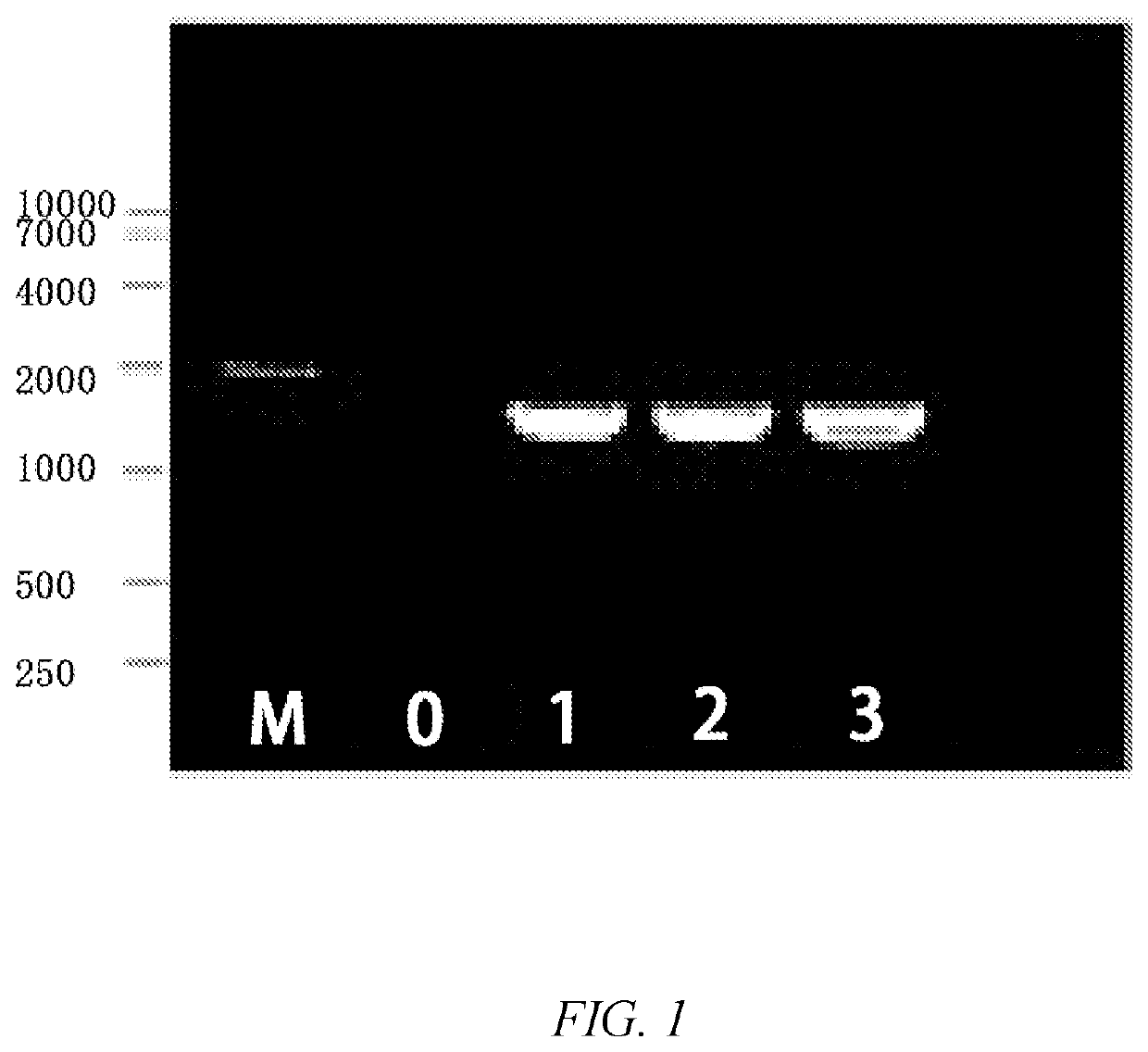Construction method of mucor circinelloides cell factory for producing dihomo-gamma-linolenic acid and fermentation technology
- Summary
- Abstract
- Description
- Claims
- Application Information
AI Technical Summary
Benefits of technology
Problems solved by technology
Method used
Image
Examples
example 1
f Mortierella alpina γ-Linolenic Acid Elongase Gene Glelo
[0049]A Mortierella alpina strain was inoculated into a 500 mL Erlenmeyer flask equipped with a baffle and containing 100 mL of Kendrick medium (30 g / L glucose, 1.5 g / L MgSO4.7H2O, 3.3 g / L ammonium tartrate, 7.0 g / L KH2PO4, 2.0 g / L Na2HPO4, 1.5 g / L yeast extract, 0.076 g / L CaCl2, 8 mg / L FeCl3.6H2O, 1 mg / L ZnSO4.7H2O, 0.1 mg / L CuSO4.5H2O, 0.1 mg / L Co(NO3)2.6H2O, 0.1 mg / L MnSO4.5H2O), cultured for 48 h at the temperature of 28° C. and at a rotational speed of 150 rpm, and cells were collected by suction filtration. RNA was extracted, and reversely transcribed into cDNA, which was carried out with reference to instructions of a reverse transcription kit. According to the genome information of Mortierella alpina in NCBI (https: / / www.ncbi.nlm.nih.gov / ) database, γ-linolenic acid elongase gene glelo (AF206662.1, 957 bp) was found, whose nucleotide sequence was as shown in SEQ ID NO: 1 below.
SEQ ID NO: 1atggagtcga ttgcgccatt cctcccat...
PUM
| Property | Measurement | Unit |
|---|---|---|
| Fraction | aaaaa | aaaaa |
| Fraction | aaaaa | aaaaa |
| Fraction | aaaaa | aaaaa |
Abstract
Description
Claims
Application Information
 Login to View More
Login to View More - R&D
- Intellectual Property
- Life Sciences
- Materials
- Tech Scout
- Unparalleled Data Quality
- Higher Quality Content
- 60% Fewer Hallucinations
Browse by: Latest US Patents, China's latest patents, Technical Efficacy Thesaurus, Application Domain, Technology Topic, Popular Technical Reports.
© 2025 PatSnap. All rights reserved.Legal|Privacy policy|Modern Slavery Act Transparency Statement|Sitemap|About US| Contact US: help@patsnap.com

